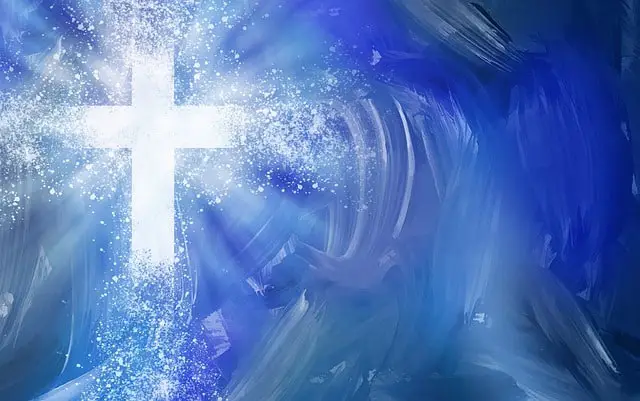Blue, a color deeply embedded in our cultural and artistic history, takes on a profound significance in the Bible, where it is known as tekhelet. This hue, with a rich history and symbolism, has captivated scholars and theologians across centuries. In this exploration, we delve into the profound meanings woven into the fabric of biblical blue. We shed light on its diverse representations and its profound connections to spirituality, divinity, and holiness.

Biblical Blue and its Ancient Origins
The roots of biblical blue, or tekhelet, stretch deep into ancient civilizations predating the Bible itself. In the ancient Near East, various cultures cherished this color for its rarity and divine associations. In ancient Egypt, blue represented the heavens and the Nile, embodying notions of fertility and rebirth. The Phoenicians, famed traders and seafarers, were renowned for producing tekhelet, an esteemed blue dye derived from the Murex trunculus, a sea snail along the coastlines.
Biblical Blue and the High Priest’s Garments
The Bible weaves a tapestry where the color blue symbolizes divinity, faith, and the very presence of God. One of its prominent uses is in the clothing of the Israelite high priests, as dictated in Exodus 28:31. The high priest’s robe was to be made of blue, signifying his pivotal role as a mediator between God and the people. In this context, blue becomes the visual embodiment of the divine authority vested in the high priest.
Expanding on this, another compelling biblical reference to blue surfaces in the commandment to attach blue tassels, or tzitzit, to the corners of garments (Numbers 15:38-39). These tassels serve as a perpetual reminder of God’s commandments and the imperative of obedience. Here, the color blue stands as a visual cue, urging a righteous way of life.
Also Read: Biblical Meaning of Dreaming of Dirty Water
The Intricate Craft of Creating Biblical Blue Dye
Moving beyond the symbolism, the very process of creating biblical blue dye was a meticulous and time-consuming craft. Derived from the glands of the Murex trunculus, a Mediterranean sea snail, the extraction involved harvesting substantial quantities of these snails, crushing them, and extracting the pigment. The extracted dye underwent careful processing, combined with other ingredients to produce a vibrant blue hue.
The exclusivity of biblical blue dye, with its rarity and labor-intensive production, transformed it into a symbol of prestige and wealth. Only the affluent and influential could afford garments dyed with tekhelet. This exclusiveness added layers to the mystique and reverence surrounding the color blue in ancient times.

The Tabernacle: A Tapestry of Sacred Space
The tabernacle, described as a portable place of worship in the Bible, was adorned with various shades of blue. The curtains enveloping the tabernacle were crafted from fine linen and woven with blue, purple, and scarlet threads. The presence of blue in the tabernacle was a profound declaration of sacred space, where God’s presence dwelled among the Israelites.
Expanding on this sacred use, the utilization of blue extended to the priestly garments, including the ephod and breastplate. These sacred vestments were also adorned with blue, and the dye used in their creation was sourced from the Mediterranean snail. The intricate and laborious process of extracting the dye made it highly valuable, reinforcing its reserved status for sacred purposes.

The Cultural and Symbolic Echoes in Jewish Tradition
In Jewish culture, the color blue retains profound significance, manifesting in traditions that endure to this day. The practice of wearing a blue thread, known as a tekhelet thread, on garments serves as a tangible reminder of commandments and one’s connection to God. This tradition, rooted in biblical times, persists in some Jewish communities, forming a living link to the ancient symbolism of blue.
Moreover, the revival of tekhelet in modern times has reignited interest in the symbolism and cultural importance of biblical blue. Researchers and scholars passionately engage in recreating the ancient dye using historical methods, providing individuals today with an opportunity to experience the profound symbolism and spirituality associated with biblical blue.
Also Read; Biblical Meaning of Snakes in a Dream
The Enduring Influence in Art and Architecture
The influence of biblical blue transcends religious practices, permeating various facets of culture, including art and architecture. Throughout history, artists have drawn inspiration from the symbolism and beauty of blue, with celestial blue hues mirroring the sky and the sea captured in countless works of art. This usage of blue evokes a sense of peace, tranquility, and spirituality.
Architects, too, have harnessed the power of blue to create a sense of grandeur and transcendence. The striking blue domes of Byzantine churches and the intricate blue mosaics in Islamic architecture stand as testaments to the enduring association of blue with the divine and the sacred.

Biblical Blue in Contemporary Society: A Timeless Appeal
In contemporary society, the color blue continues to be a favored choice for various purposes. Its calming and trustworthy qualities make it a popular selection in corporate logos and interior design. The enduring appeal of blue in branding and marketing strategies further emphasizes its association with reliability and professionalism.
Furthermore, the revival of biblical blue has gained momentum in recent years. Modern artisans and craftsmen, driven by a passion for heritage and symbolism, strive to recreate the ancient dye using traditional methods. This resurgence offers individuals today the chance to connect with the historical significance and spirituality encapsulated in biblical blue.
The Revival and Legacy of Biblical Blue
The resurgence of biblical blue extends beyond artistic endeavors to the realm of archaeology. Discoveries of ancient textiles dyed with tekhelet have unearthed insights into the historical use and significance of this color. These findings have fueled ongoing research, deepening our understanding of the cultural and religious contexts where biblical blue held sway.
The revival of biblical blue stands as a testament to the enduring legacy of this color, showcasing its ability to transcend time and cultural boundaries. It serves as a poignant reminder of the potency of symbolism and the intricate connections between spirituality, culture, and the visual arts. As we unravel the layers of meaning behind biblical blue, we uncover a story that resonates across centuries, weaving through the tapestry of human history.

Biblical Blue FAQ’s
1. What is the origin of Biblical Blue, and why is it significant?
Biblical Blue, also known as tekhelet, finds its roots in ancient civilizations, particularly in the Near East. It is highly valued for its rarity and association with the divine, symbolizing spirituality, rebirth, and the heavens.
2. How is Biblical Blue used in the Bible, and what does it represent?
The color blue in the Bible holds profound symbolism, representing divinity, faith, and the presence of God. It is notably present in the clothing of high priests and in the commandment to attach blue tassels, serving as reminders of divine authority and the call to righteous living.
3. What is the process of creating Biblical Blue dye, and why was it so exclusive?
Biblical Blue dye, tekhelet, is extracted from the glands of the Murex trunculus, a Mediterranean sea snail. The labor-intensive process involved harvesting, crushing, and extracting pigment. Its exclusivity stems from the difficulty of production, making it a symbol of prestige and wealth.
4. How did Biblical Blue influence Jewish culture, and is it still relevant today?
Biblical Blue continues to hold deep significance in Jewish culture. Wearing a tekhelet thread on garments, a tradition dating back to biblical times, serves as a reminder of commandments and connection to God.
5. What role does Biblical Blue play in art and architecture?
Artists and architects draw inspiration from the celestial blue of the sky and sea, capturing a sense of peace and spirituality. In architectural design, blue is associated with grandeur and transcendence, seen in the stunning blue domes of Byzantine churches and intricate blue mosaics.
6. How has the revival of Biblical Blue unfolded in modern times?
In contemporary society, the color blue remains popular for its calming qualities. The revival of tekhelet in modern times has sparked interest among artisans, who seek to recreate the ancient dye, allowing individuals to experience its symbolism and spirituality.
7. What discoveries in archaeology shed light on Biblical Blue’s historical use?
Archaeological findings of ancient textiles dyed with tekhelet have illuminated the historical significance of Biblical Blue. These discoveries fuel ongoing research into the cultural and religious contexts of its use.
8. How does Biblical Blue continue to transcend cultural boundaries?
The enduring legacy of Biblical Blue is seen in its ability to transcend time and cultural boundaries. Its symbolism connects spirituality, culture, and the visual arts, emphasizing the power of cultural symbols.
9. Where can one experience the spiritual significance of Biblical Blue today?
The spiritual significance of Biblical Blue can be experienced through its ongoing use in religious practices, the revival of tekhelet, and its prevalence in contemporary art and design, maintaining its relevance in the modern world.








